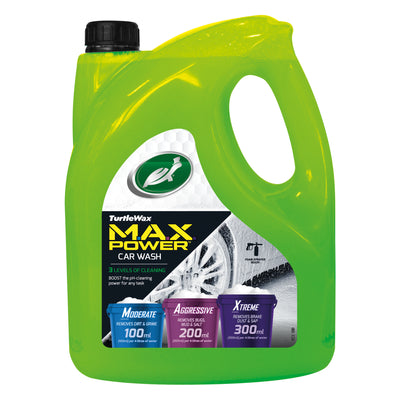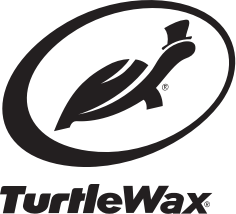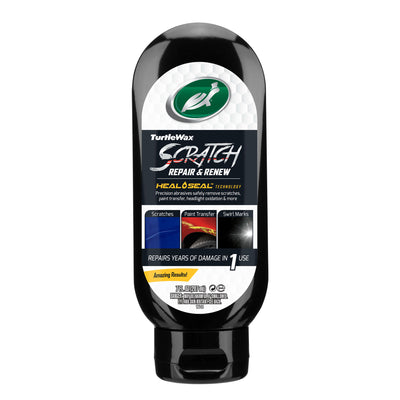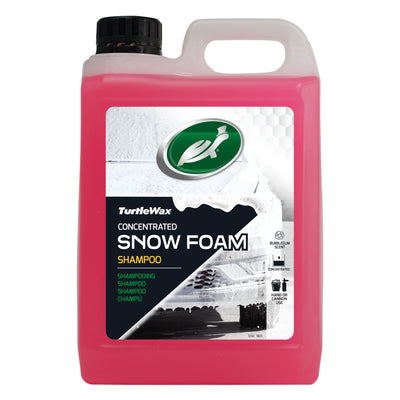

HOW TO PROPERLY WASH AND WAX A CAR: BY HAND OR WITH A BUFFER (COMPLETE GUIDE)
Do you desire that long-lasting glossy shine that rivals any showroom-quality vibrance? It’s easier than you might think to achieve. Here is our complete guide on how to properly wash and wax a car with a specialist automotive wax to bring out the lustrous shine of your vehicle’s paintwork, while leaving behind a protective finish.
With the right products available at your fingertips, like a car wash with wax, it takes no time at all to transform your car back to its luster and sheen. Whether you do it by hand or with a powered buffer, you can help protect against future damage from the sun and other elements, while at the same time maintaining your car’s value.
What is the best wax for car surfaces? Car waxes typically contain carnauba wax, a natural product extracted from the fronds of Brazilian palm trees. Because of its durability, it’s used in many commercial industries. Carnauba wax is supplemented with other natural waxes and polymers, perfectly blended to bring out the vibrant gleam of your car’s paint. We have an assortment of many different waxes with special formulas, such as our Hybrid Technology, to help you find the right product to fit your desired results.
PREPARATION FOR WAXING
REMOVE DIRT & GRIME
- Give your vehicle a thorough wash with a specialist shampoo, ensuring the removal of any traces of soap, then dry the panels completely.
- You can find a wide variety of car care shampoos produced by Turtle Wax, including Turtle Wax M.A.X.-Power Car Wash, a popular formula and the only wash available to increase its pH cleaning power, ideal for any cleaning job, from the simplest to the toughest.
- Another fantastic shampoo to try is the new Turtle Wax Hybrid ICE Snow Foam Shampoo. If you are a frequent car detailer, this formula is perfect, as it won’t strip away any protective sealants or waxes, and can easily be applied either by hand or with a foam gun.
TACKLE BLEMISHES
-
Polish your car’s surface. Polish your vehicle’s panels, focusing on any blemishes left behind by grease, dirt, and older layers of wax. Our polishing compound works best for this task.
Remove imperfections in your car’s paintwork. Any distinguishable swirls and minor scratches on your car’s paintwork should be addressed by a more abrasive formula. Our new Scratch Repair & Renew was produced specially for these issues. The power of Heal & Seal technology repairs years of damage using resins that protect and leave behind a barrier for permanent paint restoration.
BENEFITS OF WAXING YOUR CAR SURFACE
- A car maintenance routine that includes waxing helps to protect a freshly revealed coat.
- Regardless of the car’s age, waxing can act as a protective layer for years of gloss and gleam, if done properly.
- In time, waxing can cut down the frequency in which your car will need to be polished.
- Implementing wax products improves the appearance of your car, and with the added protection that comes with waxing, can help increase the resale value.

IDEAL CONDITIONS FOR WAXING
- Never attempt to wax in direct sunlight or extreme cold. The heat from direct sunlight will ‘bake’ the wax onto the car’s surface, which will make it difficult to remove any product deposits.
- If you live in the UK, an important tip to follow is to make sure you’re applying the car wax during a dry weather spell. Applying when conditions are wet will affect the application and results.
- Use a garage on a cold day, or find shade on a hot day. Car wax is best applied when working in cool, comfortable temperatures.
- Working indoors helps to avoid messes left by bird droppings or other outdoor elements.

WHAT TYPE OF WAX SHOULD I USE?
- There are a wide variety of waxes to choose from, including sprays, liquids, and pastes.
- Spray wax is the easiest and fastest to apply, just give the bottle a good shake before you use it.
- Paste wax is usually the hardest to apply, yet produces the longest lasting results.
- Liquid wax is your middle-of-the-road formula, sitting between effort versus results. Like with the spray wax, shake well before using.
Our wide selection of car waxes is vast, and we’re sure to have the right product specific to your needs, including all of the previously mentioned car waxes. Our affordable products allow you to test out different formulas without breaking the bank.

HOW TO WAX A CAR BY HAND
SPRAY WAX APPLICATION
Give your car a fresh wash and rinse prior to starting the waxing process.
- Step 1: Spray the wax directly on the car’s surface, and work one section at a time. A good product to try is our best-selling Hybrid Sealant Hydrophobic Wax.
- Step 2: Using one side of a damp microfibre cloth, rub in the wax. Focus on one panel at a time to achieve optimal results.
- Step 3: Use the clean side of the microfibre cloth to buff out any wax left over from the application process.
- Step 4: Repeat if needed.

LIQUID AND PASTE HAND APPLICATION
While the process may take a little longer to apply, the results are well worth it.
- Step 1: Liquids and pastes are best applied on a special foam polishing pad, damped before use.
- Step 2: Apply a small amount of product onto the foam polishing pad, and use circular motion to buff into the surface area.
- Step 3: Repeat as needed, in the same circular motion.
- Step 4: Ensure that all traces of the product have been removed by using a clean microfibre cloth. Thoroughly wipe over the worked surface, and check any reflections and spaces for any leftover residue.

WAXING WITH A BUFFER/ORBITAL
WHEN TO USE A BUFFER/DA ORBITAL
- An electric, battery-powered, or pneumatic buffer is a great way to reduce the amount of time it takes to get the waxing job done.
- Before beginning, take the time to familiarise yourself with how the process is done.
- Choose the right wax to use with your buffer, one that is safe and not too abrasive.
- It’s critical that you ensure that all particles are removed from the car’s surface, as using the buffer can result in swirls and causing damage to the paintwork.
- Ideally, vehicles with large, flat panels are better accommodated for buffers over small cars that have more gaps, curves, and uneven surfaces.

HOW TO WAX A CAR WITH AN ORBITAL POLISHER
- Before you begin, you can use our Scratch Repair & Renew formula with an electric buffer on your car’s paintwork, to eliminate any minor scratches and swirls, which helps to enhance the results of your wax application and give it a pristine finish.
- Step 1: Apply the wax using a specialist applicator placed over a buffer pad.
- Step 2: Use the buffer, without powering it on, to work the wax onto the car’s paintwork, using a large circular motion.
- Step 3: Now power on the buffer, and with minimal pressure, carefully slide it across the surface.
- Step 4: Work the buffer in the same direction as the flow of the metal, and after completely covering the surface, let the product dry to a haze.
FINAL STEPS
- Step 1: Grab a microfibre cloth, or better yet, a special microfibre cloth used for removing wax to help hasten the process.
- Step 2: Working in long, smooth strokes, use the microfibre cloth to buff off the dried wax, avoiding circular motions as this will cause swirls to appear on your car’s paintwork.
- Step 3: Use gentle force with the buffer, by simply guiding it. Try not to apply too much pressure.

HOW TO WAX A BLACK CAR
Because black paint tends to reveal more scratches and imperfections, products designed especially for this colour are recommended. We have a wide variety of black wax and polish products, created specifically with black cars in mind to fix any blemishes and discolouration, while adding extra protection from harmful UV rays and the elements.
- We highly recommend our Color Magic Jet Black Wax, with a black tinted formula that’s best in its class.
- Step 1: Shake well before use. Working out of direct sunlight, apply the product onto a clean surface.
- Step 2: Find a small area to test the product for a colour match.
- Step 3: Apply a small amount of product on a damp foam applicator or cloth, and distribute evenly, working one section at a time.
- Step 4: Allow the product to dry to a haze.
- Step 5: Wipe away any product left on the car’s paintwork with a soft cloth, while lightly buffing to boost the shine and colour depth.

HOW TO REMOVE WAX FROM A CAR TRIM
- Always check the product’s instructions to see if you can use it on your car’s trim or not. Not all products are safe to use on trim, which can cause residue to build up. If the product you choose to use is not ideal for this, cover the area before you begin the application.
- If you do end up in a situation where you have built up residue on your trim, try our Tyre & Bumper Trim Gel to help remove any wax from the trim and restore its original gleam.
- Step 1: Shake well before using. Apply a strip of product onto a foam applicator.
- Step 2: Apply the product to your car’s trim, waiting 5 to 10 minutes for it to penetrate.
- Step 3: With a clean, dry microfibre cloth, gently wipe away the product.
- Step 4: If needed, you can repeat the steps depending on how much residue is built up on your trim.
Related Articles
WANT MORE TURTLE WAX?
Subscribe for your newsletter and the rewards will be in your inbox before you even get there
Latest
News, events and insights from Turtle Wax® worldwide
Offers
Exclusive offers and discounts on Turtle Wax® products
Rewards
Regular treats and surprises for all subscribers





